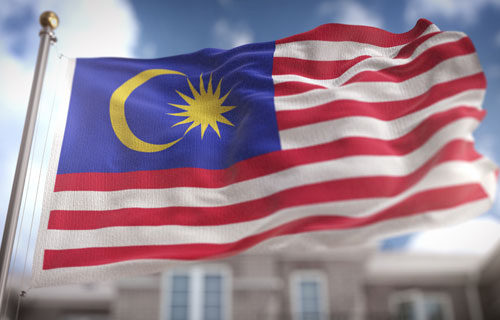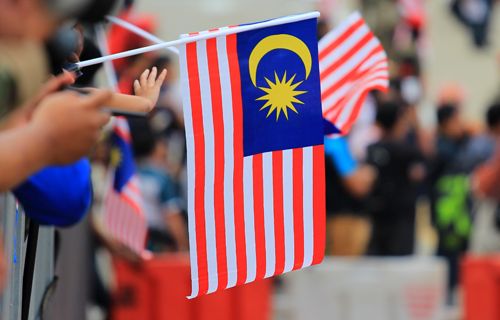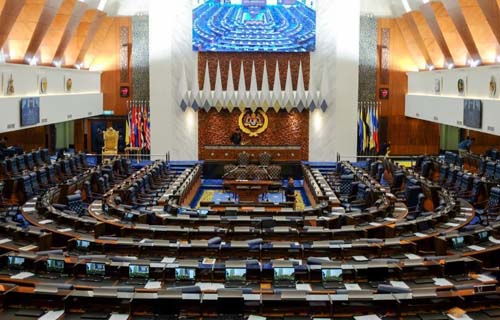Malaysia Today: How did we get here?

Written by Loke Pak-Yen, a member of Akar Umbi Kita, a programme for emerging advocates against racial discrimination by Architects of Diversity, Imagined Malaysia, IDEAS and the European Union. This article is published in conjunction with the International Day for the Elimination of Racial Discrimination.
Malaysia’s polarisation among the three major ethnicities has always been prominent. This divide among the Malays, the Chinese and the Indians has a historical basis that dates back to colonial rule.
Since the 1920s, different communities were organised in Malaya to satisfy the growing need for labour. The Chinese were centralised by kongsis while Indians were recruited via the Kangani system. The organisation of labourers marked the start of category and class consciousness amongst labourers.
Post-World War II, the British were ready to replace Malaya’s pro-Malay policies with a new holistic and progressive policy that viewed Malaya as a multiracial society with a common national identity. This led to a proposal for the Malayan Union. However, the proposal was met with criticism by Malay nationalists who felt that equal rights would threaten Malaya’s sovereignty. In 1946, United Malays National Organization (UMNO) was established as a response to the Malayan Union. The British feared that Malays would politically lean left. Thus, UMNO was approved by the British Military Administration (BMA) as it posed good competition to left-leaning parties that were on the rise at that particular time. Through secret negotiations, the Malayan Union proposal was surpassed by a new proposal for the Federation of Malaya. However, these consultations have been criticised for being non-representative of the different classes, gender and ethnicities in Malaya. The BMA mainly negotiated with UMNO and colonial admins that assumed Malaya as a Malay state.
Thus, the All-Malaya Council of Joint Action (AMCJA) was developed to oppose the constitutional proposals of Malaya. They combined forces with Pusat Tenaga Rakyat (PUTERA) to form the foremost all race political action in Malaya that proposed an alternate policy for the federation of Malaya, The people’s constitution of Malaya. As one of its leaders, S.A. Ganapathy put it, “The fight for a democratic constitution is a fight for better food and clothing”. The people’s constitution of Malaya appealed to Malaya as a multiracial society that respected the rights of all communities, together with the long-standing culture and traditions of the land and rulers. However, the anti-colonial sentiments of AMCJA-PUTERA caused refusal and rejection from the British to examine this possibility.
Back then, radical Malay nationalist groups appealed to the masses due to their ideology that went beyond the categorisations of colonial races. However, UMNO succeeded in casting doubts on left-leaning parties through their political messaging. They spread racist stereotypical cartoons that created barriers for inter-ethnic alliances. Coupled with the crackdowns of left-leaning actions by the British during the Malayan emergency, Malaya was left with right-wing political parties that fed on traditional values and pro-Malay policies.
This was followed by the formation of political parties that were essentially formed to protect the interests of the Chinese, Malaysian Chinese Association (MCA) and Indian ethnic communities, Malaysian Indian Congress (MIC). Generally, these political parties were formed to uphold the rights and maintain the survival of their respective communities. It served one common goal – to protect the rights of their people post “Malayan Emergency”. In 1955, the first general election was held where the three political parties formed an alliance, known as Barisan Nasional, that won the majority. This alliance played a key role in facilitating the transition of Malaya from a British protectorate to the Federation of Malaysia through encouraging inter-communal association between the major ethnicities of Malaysia.
However unknowingly, this development has created structural problems that have been ingrained in the nation’s politics to date. Political parties acknowledge that appealing to other ethnicities for votes will be a waste of resources, so they attempt to incentivise the political structure by strengthening their race support. In this, they tailor political communication that grows stable over time using methods of racial stereotyping just like those that succeeded before. Often, this involves the propagation of the “us vs them” mentality that encourages ethnocentrism and worsens the divide. We look back at history and we see failed attempts of unity due to right-wing ideologies that appeal to traditional values of our society. Our constitution alone was formed on ignorance and the fight for power and status. The lack of national identity makes it easy for communities to be pitted against each other as we often identify ourselves not as a whole but based on our ethnicities. We have been acclimatised into grouping ourselves into factions that have influenced our behaviour and perception towards other ethnicities in Malaysia.
Today, people are separated by their political affiliations in that, if I’m Chinese, my first option to vote is either DAP or MCA. We don’t vote based on which parties can objectively contribute to the nation but rather, on whether the ethnicity that they represent aligns with mine, just because we have been culturally conditioned to do so. In Malaysia, the division is not primarily on who we are and where we are from, but rather on how our views have been shaped.
Generally, our history has shaped our institution into rigid forms that fail every wave of reform that attempts to separate ethnicities with politics. However, change is possible when one chooses the persistent will and determination to strategically change and disrupt present institutional qualities. The results of this change cannot be observed within a span of days, but Rome wasn’t built in a day. As such, rather than politicians, Malaysia is in dire need of statesmen. As James Clarke puts it, “A politician thinks of the next election, a statesman of the next generation”.


